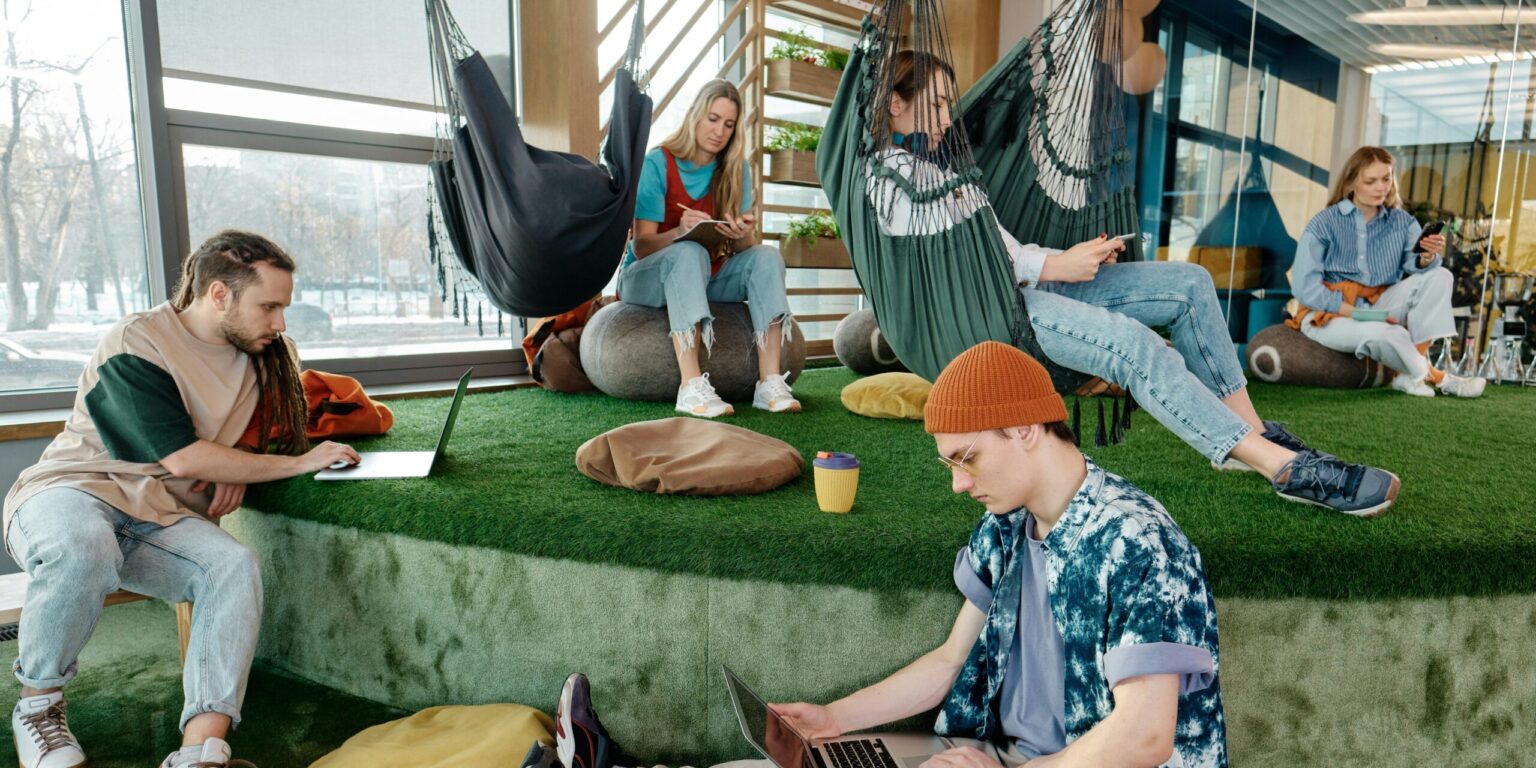Across major U.S. cities this July, co‑working providers introduced outdoor, resort‑inspired workspaces that combine open‑air seating, shade canopies, abundant greenery, and strong Wi‑Fi connectivity. Designed to rejuvenate professionals experiencing hybrid work fatigue, these new “work‑cafés” have quickly become a popular trend in urban coworking culture.
Traditional rooftop patios, underused parking lots, and open courtyards have been reimagined as lush green zones for work and collaboration. These environments offer a fresh alternative to traditional indoor offices, resulting in a 25 percent increase in attendance compared to previous months. Users consistently report improvements in mood, focus, and productivity when working in these nature-enhanced settings.
This outdoor shift reflects a broader 2025 movement in workplace design that emphasizes wellness, hospitality, and biophilic principles. By incorporating natural elements like live plants, sunlight exposure, and flexible furniture, coworking operators are creating healthier and more inspiring workspaces. Such spaces not only reduce stress but also promote creativity and well-being.
Hybrid work continues to define the modern professional landscape, with many workers choosing a mix of home, office, and third-place environments. In response, coworking providers are adapting by offering flexible memberships and experience-driven spaces. Outdoor work-cafés align with this evolution by presenting a more relaxed and rejuvenating alternative to conventional office layouts.
Read Also: https://womensinsider.com/study-30%e2%80%91minute-morning-walk-boosts-mood-and-productivity/
Major coworking brands are leading this transformation, often at the request of corporate clients seeking versatile spaces for meetings, brainstorming sessions, and small team gatherings. Venues with outdoor amenities are outperforming more traditional coworking models, indicating a strong preference for environments that blend comfort with functionality.
Users describe these resort-style workspaces as offering an immediate boost in energy and morale. Feedback highlights how natural surroundings and open-air settings contribute to a sense of mental clarity and reduced feelings of isolation. Providers also note increased appeal among wellness-focused professionals who value nature and movement during the workday.
Though currently most popular in large urban areas, the trend is beginning to influence workspace planning in suburban and secondary markets. Developers are incorporating outdoor elements into new coworking builds, recognizing the growing demand for flexible, local work hubs that support a hybrid lifestyle.
This shift is part of a larger movement in coworking that emphasizes hospitality-style amenities, sustainable materials, and community-oriented layouts. With features like modular furniture, eco-conscious design, and access to nature, coworking providers are redefining what it means to work in shared spaces.
As summer winds down, many operators plan to keep the momentum going with fall-ready outdoor enhancements. Heated patio seating, soft lighting, and seasonal wellness programming are just some of the strategies being explored to maintain user engagement year-round.
By transforming everyday spaces into green, resort-like environments, coworking providers are not just responding to post-pandemic workplace trends—they are shaping the future of work itself. The rise of outdoor co-working is more than a seasonal experiment; it’s an indicator of how professionals increasingly value well-being, flexibility, and inspiration in their daily routines.
